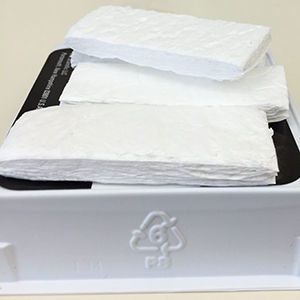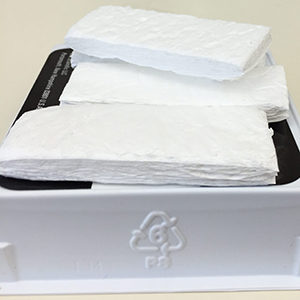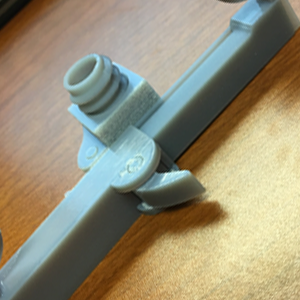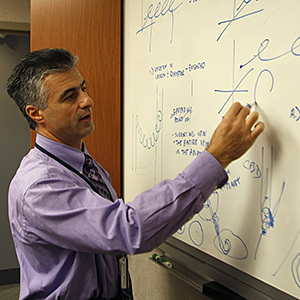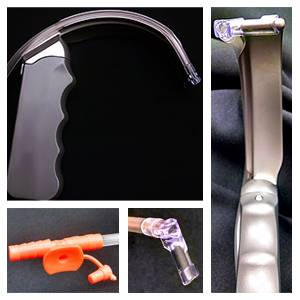Description
Better bandages make better scaffolds for repairing tissue

Jingwei Xie, PhD
A new technique developed at the University of Nebraska Medical Center creates better nanofiber mats that could impact a wide range of health care applications, and could even improve elements of the environmental, energy, defense and security industries.
In the healthcare industry, better nanofiber mats would make more absorptive bandages and wound dressings; more effective scaffolds for tissue engineering and repair; and more efficient drug delivery materials. More broadly, the technique could also be used to make better filters, and chemical and biological detection sensors.
The new method enhances the properties of nanofiber mats produced by a technique known as “electrospinning.”
Electrospinning produces nanometer-sized fibers that, in medical applications, are arranged and layered into bandage-sized mats. The nanofiber mats can then be used as wound dressings and scaffolds for tissue regeneration and cell-growth.
Traditional electrospinning typically produces uncontrolled and densely packed fibers resulting in compact and thin nanofiber mats. Tightly packed fibers have limited use because they tend to prevent cells from migrating and growing.
UNMC researchers developed the solution with a new method that expands electrospun nanofiber mats in the third dimension. The result is a thicker and deeper mesh that more resembles a sponge.
The method uses a modified gas-foaming technique that essentially enhances the thickness of the nanofiber mats. The resulting mats are significantly more porous, making them more absorbent than traditional nanofiber membranes. Preliminary studies demonstrate robust cellular infiltration and proliferation within the expanded nanofiber mats compared to the limited number of cells that are seen on the surface of traditional nanofiber mats.
Contact UNeMed to learn more about the myriad of applications that can be improved with UNMC’s new nanofiber mats.
To discuss licensing opportunities contact Amanda Hawley, PhD, at ahawley@unmc.edu or 402-310-5602.

